Eight Delicacies Rice
Eight Delicacies Rice
The traditional name of Ningbo is Laba Festival Food. It is made from raw materials such as glutinous rice, bean paste, jujube paste, preserved fruit, lotus seed, rice kernel, longan, sugar and pig fat. Nuomi invigorates qi, cowpea is known as "kidney-tonifying bean"; jujube mud has the effect of harmonizing hundreds of medicines, which is of great benefit to people's health and longevity; lotus heart has the effect of strengthening heart, rice kernel has the effect of invigorating spleen and lung, and longan is known to have the effect of invigorating qi.
Practice one
Raw materials:
Glutinous rice 200 grams, sugar 50 grams (according to their own taste adjustment dosage), ginkgo fruit, hawthorn cake, raisins and dates appropriate amount, water starch.
Practice:
1. Soak glutinous rice for more than 4 hours and drain water.
2. Wet the steamer cloth and squeeze out the water. Spread the glutinous rice evenly on it. Steam it for about 20 minutes in the water-proof fire.
3. Take out the steamed glutinous rice and add sugar (lard will be better, but for health, I did not add it) and mix well.
4. Take a big bowl and arrange the above fruits.
5. Spread the glutinous rice, then lay a layer of fruit, spread the remaining glutinous rice in a bowl, and press it flat.
6. Steam in a steaming pot for 30 minutes over high heat. Remove the bowl and turn it upside down on the plate while it is hot.
7. Ginkgo biloba fruit is placed around, the frying pan is set on fire, the water starch is added to the starch according to its own taste, sugar is put in the starch, and it can be sprinkled on Babao rice.
Practice two
Brief introduction: This sticky rice made from eight kinds of raw materials is sweet, soft and waxy, with more delicious color and easy to make. Come and try it quickly, and present it at the New Year's dinner, adding more flavor and festive color.
Ingredients: 300 g glutinous rice, 2 tbsp white sugar, 1 tbsp butter, 1/2 teaspoon salad oil, 200 g red bean sha, 20 g baked walnut kernels, 5 red dates, 3 G baked pumpkin kernels, 3 G baked peanut rice, 10 orange flaps in sugar water, 1 peeled pineapple, 450 ml purified water
Cooking methods:
1. Clean the glutinous rice and soak it in cold water for 50 minutes. Drain and drain it. Put it in an electric cooker. Add 450 ml of purified water. Cook the rice according to the instructions of the electric cooker and make it into glutinous rice. Spoon into a large bowl, cool for 2 minutes, add sugar and butter, mix well and set aside.
2. Wash the jujube, soak it in warm water for 30 minutes, remove the core and cut it in half. Cut the roast pumpkin seeds, peanuts and walnuts into small pieces. Mix the minced walnuts in the red bean paste.
3. Take a shallow bowl with a diameter of 18 cm and wipe the bowl with salad oil to prevent adhesion. Place the pineapple slices in the middle of the bowl, and the broken peanuts and melon seeds in the middle of the pineapple slices. Put the jujube and sugar orange petals at the bottom of the bowl, centered on pineapple, and arranged in a radial arrangement. Place 1/2 amount of glutinous rice, spread it evenly; then spread walnut bean paste evenly; then spread the other 1/2 amount of glutinous rice in a bowl, fill it up to the mouth of the bowl and press it flat. Add enough water to the steaming pot. Place the bowl on the steaming grid of the steaming pot. Cover the pot. Steam over medium-high heat for about 25 minutes, so that sugar, oil and other flavors can permeate the rice.
4. After steaming, take out the bowl carefully and cool for 5 minutes; use a knife to separate the glutinous rice from the edge of the bowl; take a plate with a diameter of 22 cm and put the bowl upside down on the plate, so that the glutinous rice can be completely poured out of the plate.
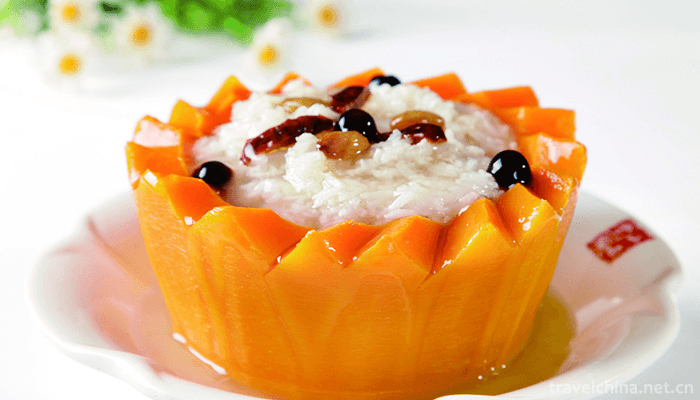
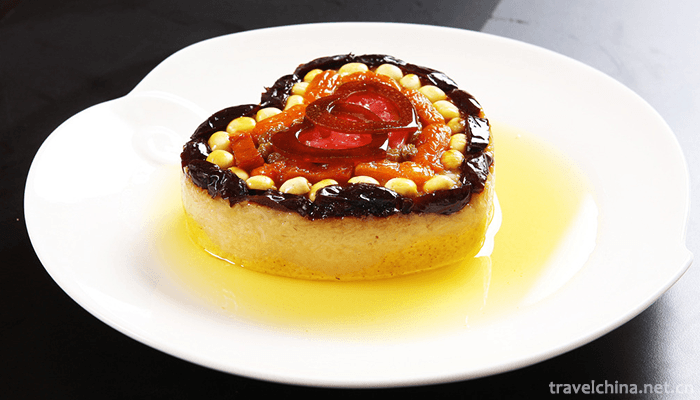
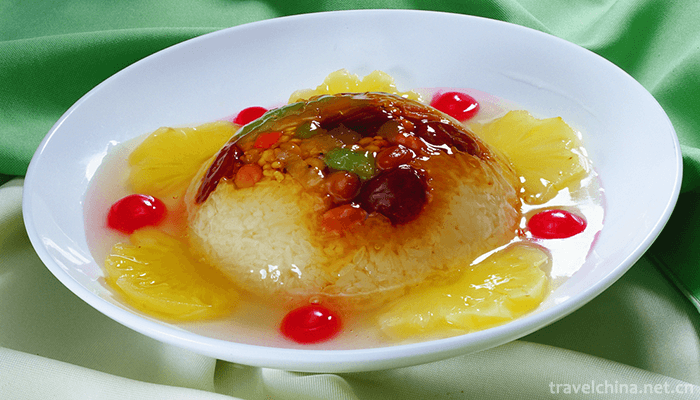
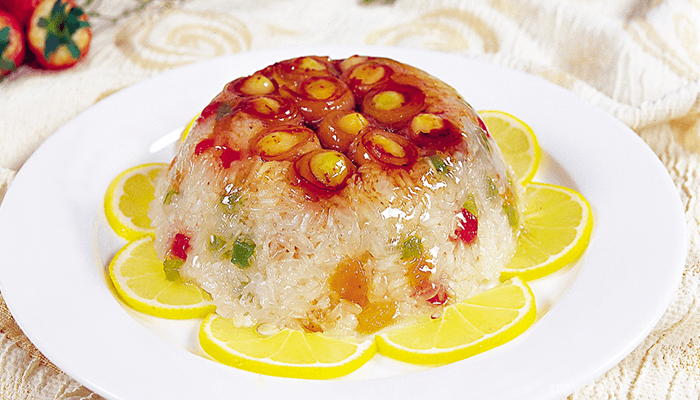
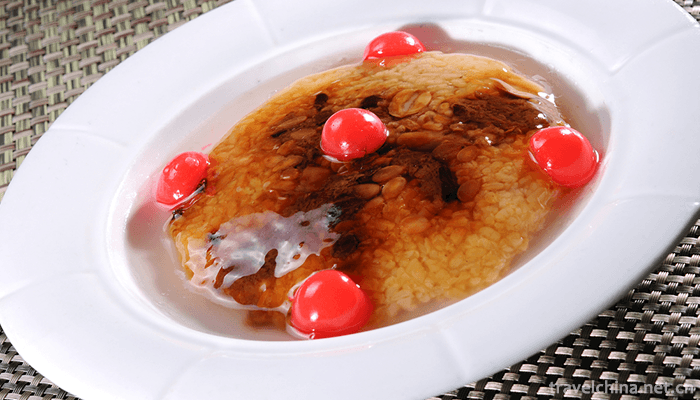
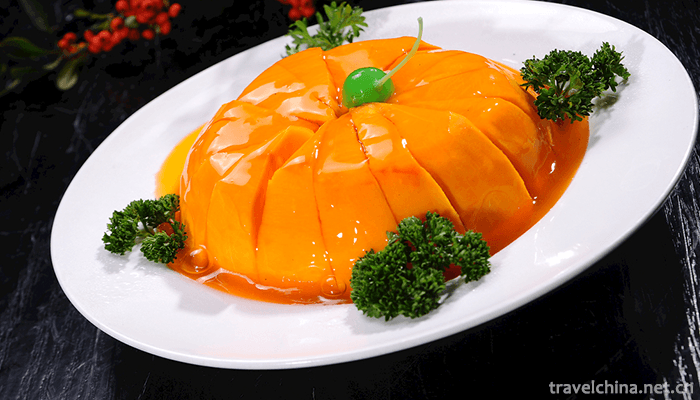
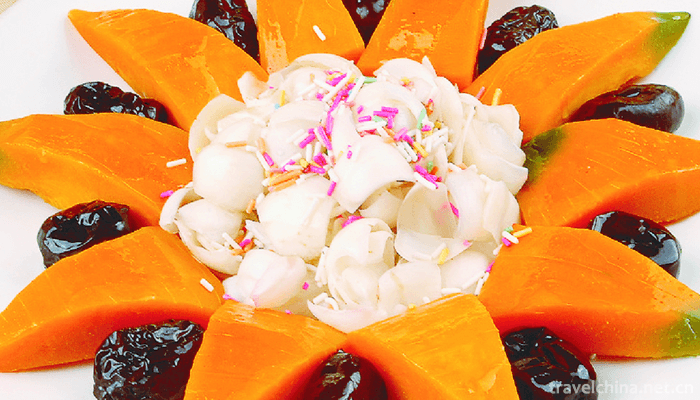
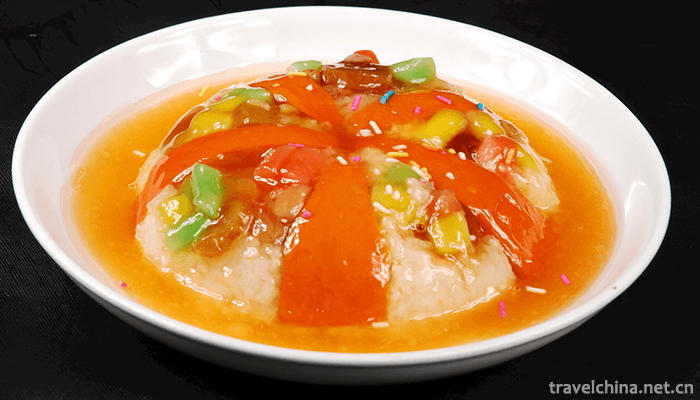
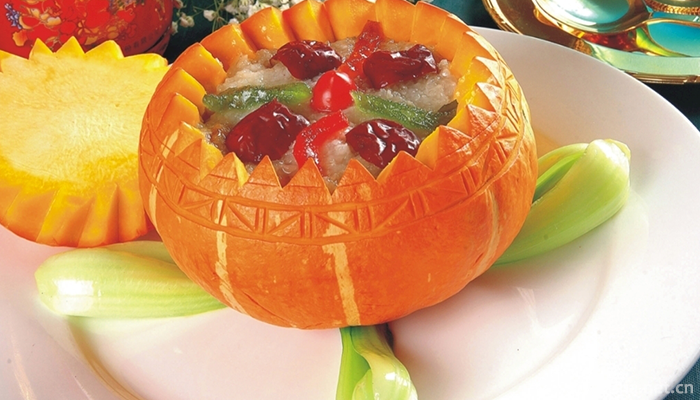
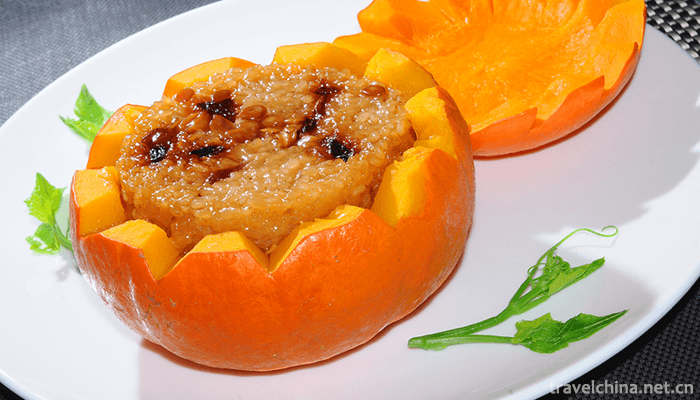
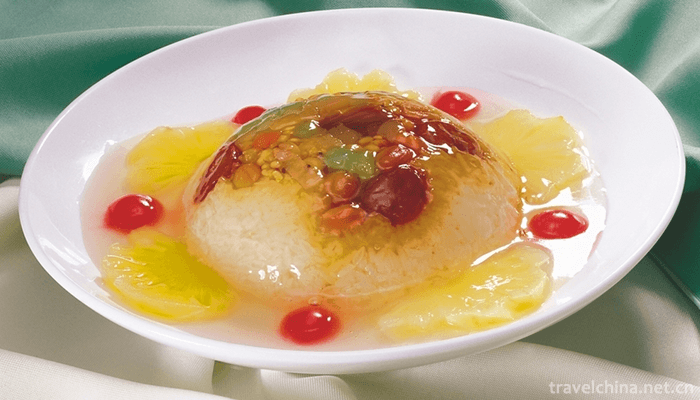
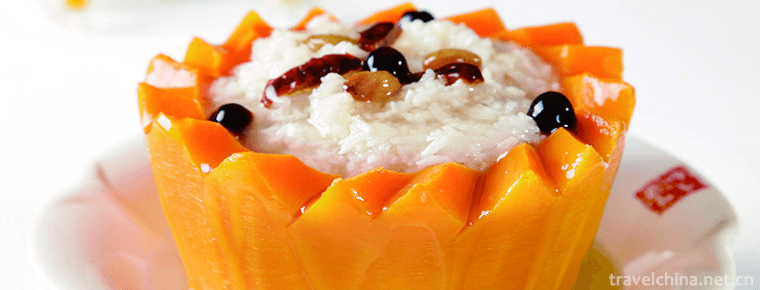
-
1.Huguangyan Scenic Spot
Huguangyan Scenic Spot is located 18 kilometers southwest of Zhanjiang City, the southernmost part of the mainland of China. It is called "natural yearbook" of earth and geological science b
Time 2019-01-16 -
2.Shali River Scenic Area
Shali River Scenic Spot, located in Luohe City, Henan Province, is built on the basis of Shali River and Lihe River. The total area of the scenic spot is 86 square kilometers
Time 2019-02-07 -
3.Cloth paste painting
Teng Teng is the founder of Teng's cloth paste painting. He was born in Fengning Manchu Autonomous County, Hebei Province in 1932. He is the director of Teng's cloth paste painting
Time 2019-04-04 -
4.Tibetan drama
The Tibetan name of Tibetan opera is "Aguiram", which means "fairy sisters". According to legend, Tibetan opera was first performed by seven sisters. The content of the opera is mo
Time 2019-04-05 -
5.Taoist Drama
Taoist sentiment is a category of traditional Chinese folk art. It originated from Taoist songs such as Chengtian and Jiuzhen in Tang Dynasty. The Southern Song Dynasty began to accompany with fishing
Time 2019-04-25 -
6.Manchu Pearl Ball
Pearl ball is a traditional sport of Manchu, originally known as pearl picking, which originated from the ancient pearl picking production activities of Manchu. In the age of Taizu Nuerhachi in the Qi
Time 2019-05-20 -
7.Qingming Festival
Qingming Festival, also known as Taqing Festival, Xingqing Festival, March Festival, ancestor worship festival, the festival period in mid-spring and late spring. Qingming Festival originated from anc
Time 2019-06-11 -
8.Uygur Costume
Uygur costumes - more patterns, very beautiful, full of characteristics. Uygur men - pay attention to black and white effect, so bold and unrestrained. Uygur women prefer to use contrasting colors to
Time 2019-06-26 -
9.Hu Xueyan
Hu Xueyan (1823-1885), Hu Guangyong, the younger name, Shun Guan. Xue Yan, born in Anhui Huizhou Jixi He moved to Zhejiang when he was 13 years old. Hangzhou Famous in modern China red top A politicia
Time 2019-09-07 -
10.Recommended routes for Chengdu Giant Panda Base
Recommended routes for Chengdu Giant Panda Base,Recommended route (1.5 hour tour)
Time 2020-12-13 -
11.Suining history and culture
As a place name, "Suining" began in the Eastern Jin Dynasty. The Eastern Jin Dynasty coexisted with the Sixteen States, while Suining belonged to the Chenghan state. At that time, the rulers of various countries had been fighting with each other for years
Time 2020-12-16 -
12.Leshan specialty food
Leshan bean curd is one of the special snacks in Leshan, Sichuan Province. The bean curd has deep red pepper and green coriander or celery.
Time 2020-12-17